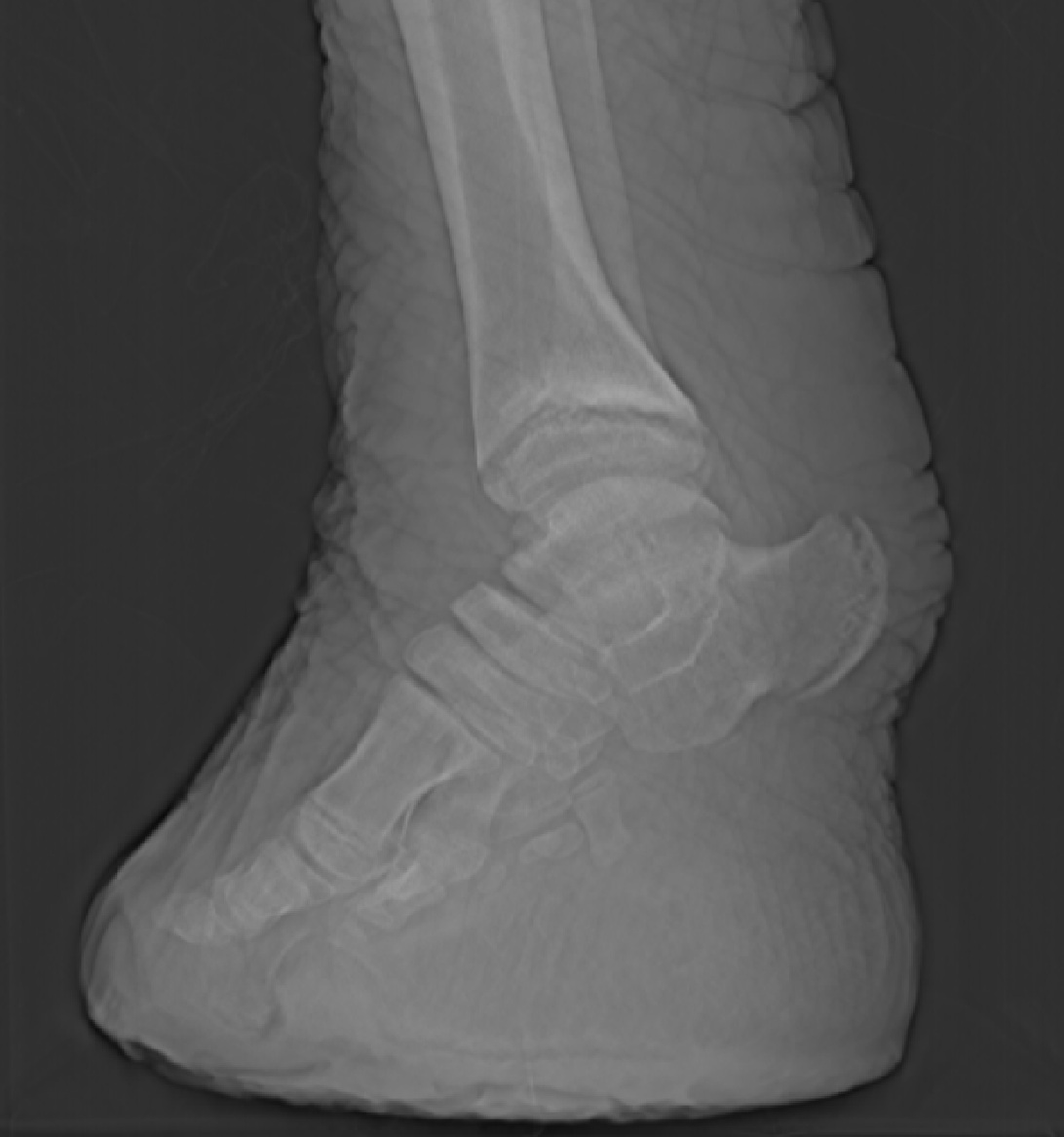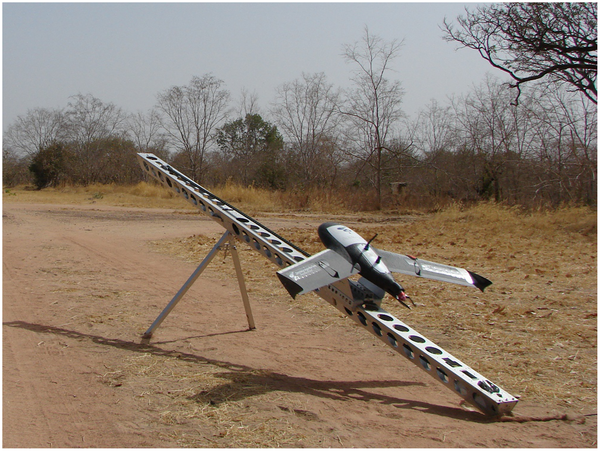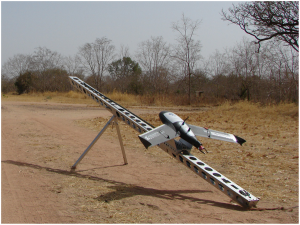As mentioned previously on the blog, Andrew Jackson and I started a new module this year called “Research Comprehension”. The module revolves around our Evolutionary Biology and Ecology seminar series and the continuous assessment for the module is in the form of blog posts discussing these seminars. We posted a selection of these earlier in the term, but now that the students have had their final degree marks we wanted to post the blogs with the best marks. This means there are more blog posts for some seminars than for others, though we’ve avoided reposting anything we’ve posted previously. We hope you enjoy reading them, and of course congratulations to all the students of the class of 2014! – Natalie
Here’s Kate Minogue and Rosie Murray’s blogs inspired by Professor John Hutchinson‘s seminar, “Six-toed elephants and knobbly-kneed birds! Case studies in the evolution of limb sesamoid bones.”
———————————————————————————
Them bones them bones need………investigating!
Kate Minogue
When a seminar begins with a stuffed cat photo-bombing with the crowd you know its not going to be your usual type of research seminar, and what John Hutchinson discussed during his talk in Trinity College Dublin was far from the norm. The acclaimed scientist and author of the hugely popular blog “What’s in John’s freezer?” kept the audience intrigued throughout. From six-toed elephants to two-knee-capped birds the diversity of sesamoid bones was dealt with in great detail and, more importantly to an audience of previously oblivious zoologists, their evolution over time gave us some amazing new insights.
Firstly I think its important to begin as Hutchinson himself did. By explaining what a sesamoid bone is. They are essentially small, rounded masses embedded in certain tendons and usually related to joint surfaces. They can be found in the knee, hand, wrist and foot of the human body. Hutchinson himself explained them as a waste basket of bones that “ sit in funny places”. By looking at different species which possess these bones in certain locations, Hutchinson began investigating their function and the role they play in locomotion ability. It was through his work in this field that these small, awkwardly located and previously misunderstood bones were credited with giving greater mechanical advantages to an organism by allowing a change in direction of muscle force.
The most interesting part of Hutchinson’s work, from my point of view, was his research on elephants’ feet. By looking deeper into the composition of the foot of present day elephants and past remains he was able to highlight an evolutionary change that has occurred over millions of years. Looking at an elephant you would consider them to be very flat footed animals. However Hutchinson’s research proved this observation to be incorrect. By dissecting present day elephant feet (from that famous freezer of his) he was able to show that they are in fact pointed-toed animals. At the rear base of their foot they have a mass of fat which causes the bone structure of their foot to be tilted ( almost as if they were wearing a high wedge made out of fat). But it was what he found within this mass of fat that make this unlikely foot structure functionally possible. He identified a sesamoid bone embedded within, which was acting as a sort of prop along with the cushion of fat. This bone was later referred to as a pre-digit as it has lost its tendon connections over time and now acts more like projections from the base such as digits. The adaption of the sesamoid bone in the foot of the elephant over 40 million years ago has allowed elephants to change their posture from a once flat footed animal to a very unusual large mammal with a tilted foot presumably giving the animal better mobility.
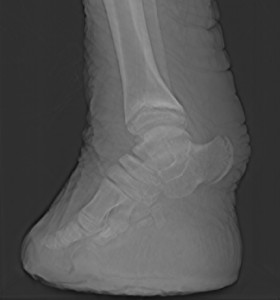
The panda is another example that Hutchinson touched on to highlight the use of a sesamoid bone to increase mobility. Instead of evolving an opposoble thumb to aid in grasping bamboo and feeding they use an enlarged sesamoid bone to act as a thumb instead. This adaption has fulfilled its role perfectly and allowed pandas to continue to feed on their exclusive food source, as long as it exists.
Leaving Hutchinson’s seminar I found myself questioning what else we are misunderstanding in the animal kingdom. How have these sesamoid bones which appear to have a huge role in mobility and muscle function pretty much escaped our attention till now and what else are we missing? Hutchinson’s work is a clear example that if you question the unlikely you could just discover something unexpected. Who would have thought it, a 6-toed, high-heels-wearing large mammal! It just doesn’t get better than that, or does it….?
———————————————————————————–
HOW does the chicken cross the road?
Rosie Murray
While a chicken’s reasons for crossing a road have long been fodder for comedians (the not-so-funny ones), science is less concerned with its motives, and more with its locomotives (that is, HOW chickens cross roads).
Locomotion in modern birds (Neornithes) has two remarkable features; feather-assisted flight and unusually crouched hindlimbs, for bipedal support and movement. I will focus on the issue of crouched hindlimbs.
As has been known for decades, modern birds are dinosaurs (even comparatively rubbish birds like chickens). So, the way birds – living dinosaurs – move is obviously a vitally important source of data for understanding how locomotion worked in extinct dinosaurs.
But birds have some unusual features that set them apart from all the other dinosaurs. A major difference is that birds don’t really have tails, or, if they do, they’re fairly negligible, feathery things. We know that all the other dinosaurs had really big, long, meaty tails. So, somewhere on the way to birds, the tail became so reduced in size that it has almost been totally lost.
The vast majority of land animals, including ourselves, move forwards by swinging the entire leg back-and-forth from the hip (hip-driven locomotion). However, birds keep their hips extremely bent; pointing their thighs forwards, and move around mostly by swinging the lower leg from the knee (knee-driven locomotion). This bent hipped, knee-driven style of moving gives them a characteristic “crouched” look.
But, let’s start at the very beginning. In order to move, terrestrial animals exert a force against the ground to support and then move their body. The reaction force of the ground (GRF) is directed at, or close to, the centre of mass (CoM). This stabilizes the body as it moves position. The GRF is mainly vertical during the mid-phase of locomotion. The mid-phase is when the hindlimb is poised beneath the body on its way forward. Bipedal animals such as birds use a single supporting limb for most of this stance. Therefore the foot of this limb must be placed directly underneath the CoM to exert the vertical GRF. The joints of the limb must also be suitably positioned so that the antigravity muscles can push against the ground in such a way as to move forward without losing balance. The location of the CoM is therefore a major determinant of the limb orientation at mid-stance (Fig. 1)
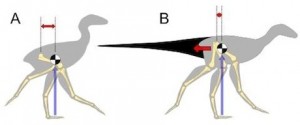
Losing the tail means that relatively more of a bird’s mass is at the front of the body, resulting in a more cranial CoM. To remain balanced, the feet and legs also need to be placed further forwards. And, one consequence of the crouched, knee-driven way birds walk and run is that the leg joint that does most of the job (the knee), can be stuck a lot further forwards on the body than the main joint other animals use (the hip). So a lot of the weirdness of bird locomotion may just be related to them having to put their legs more towards the front of the body, to match the CoM.
To test this, a team of scientists lead by Bruno Grossi took a simplified approach to the question, and stuck a big heavy tail on a chicken’s backside to mimic the stature of dinosaurs. And the CoM moved back, just like that. The chickens responded by straightening their legs and swinging their hips more, just as their dinosaur ancestors are hypothesized to do. If you’re interested in reading Gossi’s paper, you can find it here.
The current trend in this kind of research is towards more technical methods; using computer models to digitally reconstruct movement using every muscle, tendon and bone possible. Professor John Hutchinson and his team are doing exactly that. And their findings unarguably agree with Gossi’s very simple experiment, that the CoM of modern birds has moved forward, and brought with it, the ‘crouched’ stance that we see in the modern day chicken and its relatives.
So, how does the chicken cross the road? Well, as always in science, we can only say how does the chicken NOT cross the road? Not like a dinosaur (Fig. 2…not to scale!).
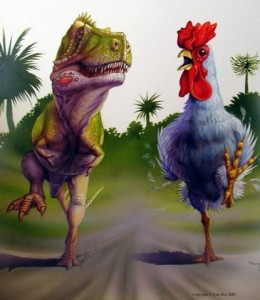
And, if you’re curious, you can check out this newly discovered dinosaur now termed ‘the chicken from hell’.

